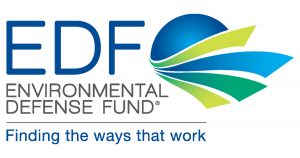The struggle to battle climate change has never proven to be more difficult. Despite having numerous benefits, the accelerated economic growth in 2017 had adverse effects in one particular domain- global energy-related carbon emissions. Fueled by a strong economic growth, the global energy demand rose by 2.1% (equivalent to 14050 million tonnes of oil). This rise may even be considered drastic when compared to previous years ( a steady 0.9 % from 2011 to 2016). As a result, there was a rise in petrochemical demand, which along with the transport sector contributed to a growth of 1.6 % in global oil demand- twice the average annual rate over the previous decade.
A key issue addressing this problem is the constant spotlighting of carbon dioxide emissions and therefore a neglect towards Methane emissions. Resulting from the facts that methane has a shorter lifespan of 12 years in the atmosphere (while carbon dioxide lingers on) and Global Greenhouse Gas Emissions is attributed by 65% carbon dioxide emissions and by just 16% methane emissions, scant attention has been paid towards the latter, despite methane having 84 times the short-term warming effect of carbon dioxide.
Regardless, some initiatives have already been made by organizations to limit and control methane emissions (and other environmental alterants) by installing various Google Maps APIs into their maintenance and waste management systems.
ENVIRONMENTAL DEFENSE FUND

The Environmental Defense Fund (EDF) is an American Non- Profit environmental based advocacy group which aims to ‘stabilize the global climate, build safeguards against extreme weather, ensure food security and abundant oceans and reduce exposure to air pollutions and toxic chemicals.’
Challenge
The United States has a vast network of natural gas distribution pipelines, spanning 1.3 million miles; therefore making people susceptible to direct exposure to methane in presence of any leakage. Inefficiencies in existing technology make it difficult to locate these leakages and in turn, make it difficult to effectively repair them. Trouble arises because these issues are required, by law, to be addressed quickly. Hence the EDF sought to address these leakages effectively and quickly in order to contribute its part in limiting the effects of climate change.
Solution
In 2014, the EDF made efforts by collaborating with Google Earth Outreach by installing methane sensors in Google Street View Cars. This way, the cars capture a 360-degree view of street imagery while also accommodating for concentration levels of methane gas in the air, in the routes taken by the vehicles. Google Maps enables the EDF to map the routes the street view cars encompass and to further detect spikes in methane gas levels at specific locations (hence suggesting locations of leakages). Joe Van Fischer, a Colorado State University Professor and Scientist, aided this project by helping the team develop technology to detect methane gas levels from a moving vehicle.
APIs used in this initiative
-
Google Maps Javascript API
ENEVO
![]()
Enevo focuses on optimising waste management in countries around the world by automating the planning of waste collection. It strives to reduce the inefficiencies present in the waste logistics industry.
Challenge
Primarily many waste management systems currently employ fixed and ‘static’ schedules. This makes it problematic in addressing locations that need urgent attention and may sometimes delay the process of waste collection in locations that experience waste overflows. With this concern in the forefront of its initiative, Enevo aimed at providing its customers with intelligence and software while also reducing the burden on its developers (thereby attempting to reduce costs in research and development).
Solution
The company devised a scheme where they developed wireless smart sensors that could be placed in trash and recycling bins. Enevo’s cloud-based application, using data from the sensors, records the content level of these bins and furthermore predicts when the containers would be full. Accompanying the sensor data that provide vital information such as fill level, the application accommodates Google Maps APIs in order to depict precise locations of the containers. By doing so, the technology assists drivers in the waste collection processes by enabling them to locate containers that need prioritized attention. In turn, drivers can send status updates and report issues they face.
APIs used by Enevo
-
Google Maps Directions API
-
Google Maps Geolocation API
-
Google Maps Distance Matrix API
Conclusion
Methane and Carbon Dioxide are not the sole critical factors that affect climate change in adverse ways. It is noteworthy that greenhouse gas emissions are attributed to nitrous oxide emissions and by F-gases emission, although they contribute 6% and 2% respectively apart from other human and non-human factors.
Although there are carbon tax laws that are prevalent in many countries that limit carbon dioxide emissions by industries, certain inefficiencies are prevalent; notably the buying and selling of licenses that encourage and permit some businesses to emit more carbon than their original legal limits. Such defensive measures may not prove to be desirable always.
The Google Maps APIs, in ways listed above, advocates technological advancements and serve as pro-active measures against the rampant problem our planet is facing and in such a manner contributes to the attempt to curb climate change.
If you’re interested in viewing more articles related to Google Maps APIs and it’s various use cases, please click here.

